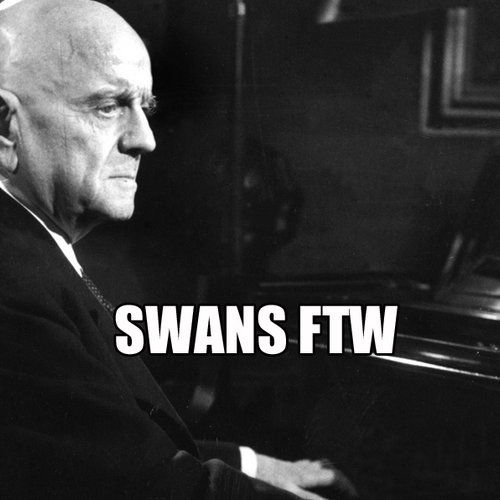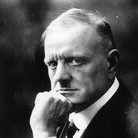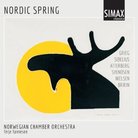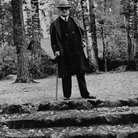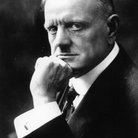Jean Sibelius: A Life
He was one of the great musical visionaries of the 20th century and his symphonies revitalised a tradition that was close to collapsing under its own expressive weight. There are few of us who haven’t been bowled over by the blazing creative genius of Jean Sibelius.
To understand fully Sibelius’s music you have first to immerse yourself in the culture, the legends, the climate and above all the breathtaking scenery of his beloved homeland, Finland. Here temperatures range from a balmy 30° centigrade during the summer to a forbidding minus 20° in January and February. In the northern part of the country during the summer the sun doesn’t set for 73 days, while in the winter for 51 days the region is cloaked in darkness.
Three quarters of Finland is covered by thick pine forests, while a further 10 per cent is occupied by a staggering 190,000 lakes. It is a country quite unlike any other in Northern Europe and its impact on the music of its most celebrated son, Jean Sibelius, was incalculable.
Sibelius drew his inspiration from the Finnish soil, often going on long walks to commune with nature. The blurring of day and night is reflected in a series of late masterpieces whose temporal multi-layering creates a thrilling frisson. Even when the surface of Sibelius’s music appears to be bustling with activity, it is often underpinned by long pedal-points – passages where the bass note remains constant – anchoring the music in such a way that it feels strangely as though you’re running on the spot.
“Sibelius’s pedal-points create a vast slow motion of their own, like that of the sky as the Earth rotates,’” observed composer and musicologist Robert Simpson, “while upon the planet’s surface there is teeming human and animal movement.”
It is this kind of revolutionary thinking that led many inter-war commentators during the last century to view Sibelius as Europe’s greatest living composer. In the 1934 edition of The Musical Companion the distinguished English musicologist Julius Harrison went so far as to claim that “Sibelius is the one recognised by cultured musicians as the most fitting successor to the immortal Brahms.”
And in many ways he was right. Nowadays it is Mahler’s vast symphonic “worlds” which tend to grab the headlines due largely to their narcotising invention. Yet during an unusually frank and open discussion with Mahler, Sibelius insisted that when composing, one thing remained paramount: “the profound logic which binds together all the inner motifs.”
Considering his visionary insights, Sibelius caught the creative bug relatively late. He didn’t begin having formal piano lessons until he was nine-years-old, although it was the violin that eventually fired his enthusiasm to the point that he set his heart on becoming a world-class virtuoso.
For a while everything seemed to be on track – he even got as far as an audition with the Vienna Philharmonic Orchestra in 1891. The fact that he was turned down dealt a severe blow to his dreams and aspirations at the time yet, viewed in retrospect, had he succeeded we would have been denied some of the most remarkable music of the early 20th century. The most notable musical outcome was the barnstorming Violin Concerto of 1903, composed for the virtuoso that Sibelius never became.
Meanwhile, Sibelius had been receiving a thorough training in composition, including lessons in Vienna with Karl Goldmark of Rustic Wedding Symphony fame. But what really set him on the road as a composer was the Berlin premiere of his conductor-composer friend Robert Kajanus’s symphonic poem Aino in 1890.
“My acquaintance with this work proved to be very important,” Sibelius later remembered. “It showed me the wonderful musical possibilities offered by the Kalevala [the epic Finnish poem, which rivals the Iliad in scope and length]. I remember that the legend of Kullervo fascinated me even at school. After I heard Kajanus’s Aino, I became more and more fascinated by the idea of writing a work of my own with motifs from our national Finnish epic.”
The fearsomely nationalistic young Finn’s immediate response was a massive five-movement symphonic poem entitled Kullervo composed in 1892, the year he married Aino Järnefelt. This was swiftly followed by En Saga, the Karelia Suite, and the series of four orchestral Legends: in Lemminkäinen and the Maidens of the Island, Lemminkäinen (“the Don Juan of Finnish mythology,” according to Sibelius) abandons his young wife and goes to Saari, where he sports with the young maidens; the men chase him off.
The Swan of Tuonela, arguably Sibelius’s first true masterpiece, finds Lemminkäinen entrusted with the task of shooting the swan that lives in Tuonela (the kingdom of death) as a present for his future bride. He fails in the event, leaving the swan free to seduce the souls of the departed with its sad songs. The bleak soundscape of Lemminkäinen in Tuonela describes his journey down Tuonela’s black river where he is killed but, in music of the utmost tenderness, is brought back to life by his mother. Lemminkäinen’s Return depicts his triumphant homecoming in music that looks forward to Sibelius’s most nationalistic and popular orchestral work, Finlandia (1899).
One might be forgiven for assuming that Sibelius would henceforth simply devote himself to a series of pictorial orchestral works drawn from Norse mythology. Yet in 1899 he produced the first in a cycle of seven non-programmatic symphonies that would redefine the capabilities of the form.
If the first two symphonies don’t entirely break free of their Tchaikovskian inheritance, the Third is heir to the Classical style of Beethoven and Haydn, predating Prokofiev’s Classical Symphony by a decade. The Fourth is one of the most unforgiving of all symphonic works, composed in the wake of discovering a tumour in Sibelius’s throat. The horn-call finale of the Fifth spectacularly rethinks the heroic symphonies of Bruckner, while the transcendental Sixth exchanges the Germanic grand manner for a sublimely original form of cool understatement. With the Seventh Symphony Sibelius took this process of musical integration a stage further by telescoping the usual four movements into a single continuous structure.
The opening decade of the 20th century was a period of mixed fortunes for Sibelius. His international reputation grew steadily as he developed from a blazingly inventive genius into a true visionary. Yet behind the scenes things were altogether less promising: Sibelius was slipping further into debt while his bouts of heavy drinking placed an increasing strain on his marriage.
Things were hardly helped when in 1903 he composed the Valse Triste, which would go on to become an international hit. All he got, however, was a single payment of 300 marks from his publisher, who proceeded to make a fortune out of it.
On the plus side, Sibelius built a villa which he named Ainola (after his wife) in Järvenpää, not far from Helsinki, which was to remain his home and inspiration to the end of his days. Until the outbreak of the First World War he was in great demand as a conductor, yet he essentially remained out of kilter with his times, as witness Stravinsky’s waspish quip that ‘Five thousand lakes do not make a symphony!’
Sibelius’s last major work was the 1926 tone poem Tapiola, which tantalisingly points towards a new period of creative mastery. However, and with over 30 years of his life remaining, Sibelius virtually laid his composing pen to rest. For several years he worked secretively on an Eighth Symphony, but this was later consigned to the fire.
Sibelius’s output is admittedly uneven. He composed a quantity of salonesque piano music simply to keep the wolves from the door, and compared to the likes of Mozart, Beethoven and Brahms, his output of sonatas, concertos and quartets appears decidedly meagre. Yet in the tone poems and the seven symphonies his creative genius blazes with an intensity matched by few composers of any period.


